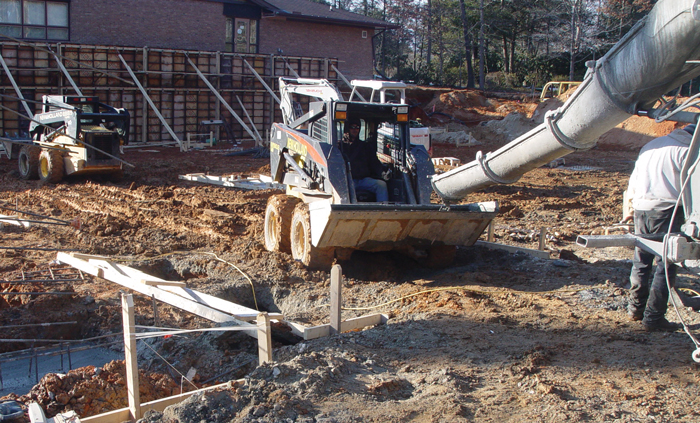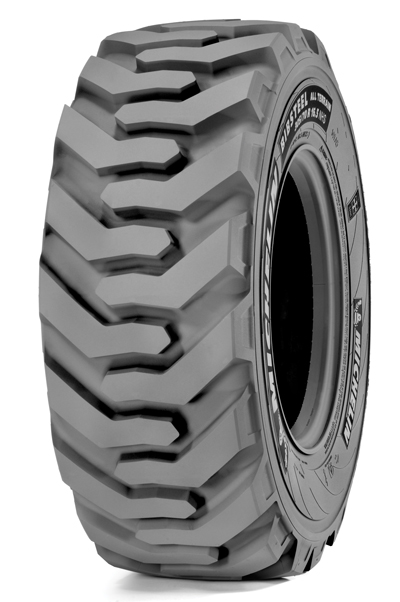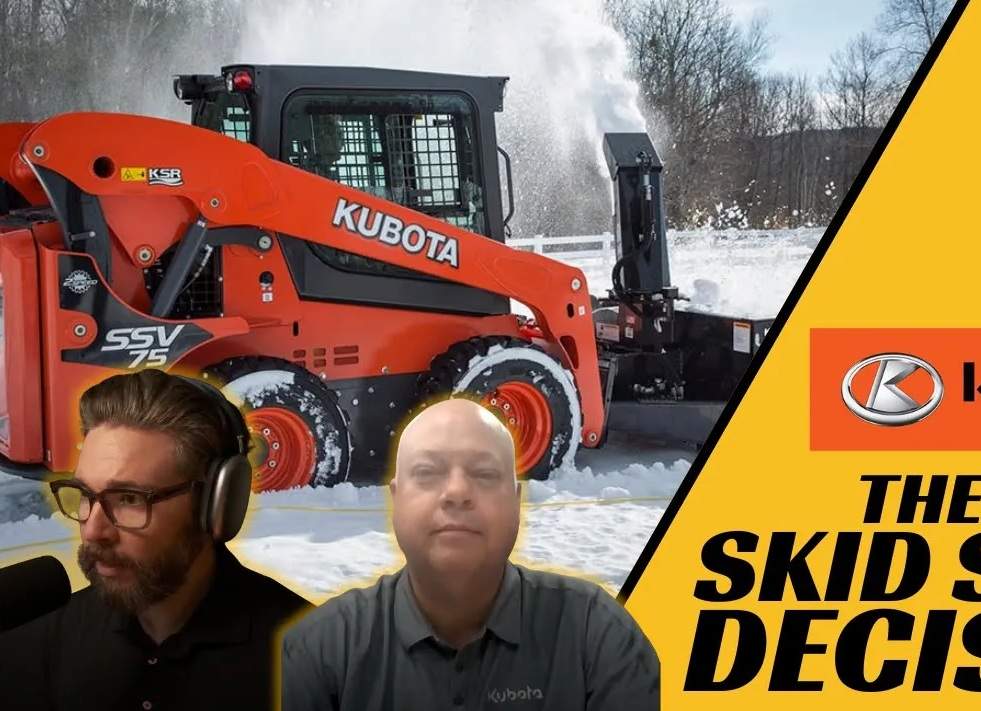Skid Steers and Bias Tires

There’s a smorgasbord of options when it comes to equipping skid steers, track loaders, backhoes, telehandlers and compact equipment of all types — with both tires and tracks — ranging from the least expensive bias tire to pricey track options. But when the rubber hits the road, as they say, operators who don’t want to leave their rubber on the road are finding it beneficial to consider investing in radial tires specifically for their skid steer operations. This requires a higher upfront cost than replacement tires that can run as low as a couple of hundred dollars, but when radial durability and lifespan that can be two to three times that of bias is factored in, the total cost of ownership of radials saves operators money.
“Ag has moved more quickly to radial,” says James Crouch, ag segment manager for Michelin North America. “Compact equipment is still mostly bias, but operators see that radial tires are more durable, last longer and save money.”
In fact, the radial market for general construction, road construction and ag applications like dairies is increasing.
“It’s an aggressive market,” says Crouch. “There are a lot of less expensive options. Many skid steer operators experience several flat tires a month. Radials can be a better choice to reduce overall downtime.”
And market conditions are laying the groundwork.

A typical bias-ply tire lasts 200 to 300 hours in compact equipment applications, but radial tires for compact equipment can last two or even three times that, Tiscareno says, because their steel plies and reinforced shoulders are designed to resist the constant abrasions, curb bumping and puncture threats to which they are subjected. Bias-ply tires come with two primary advantages. First, they tend to be less expensive and plentiful. Easy to get, cheap to buy and not an expensive loss when they fail, they also tend to have higher load-carrying capacity than radials. But these advantages come at a cost.
Bias-ply tires suffer from higher friction. That creates higher temperature on the rubber, causing both higher wear and leading to a jerkier ride, which in turn results in more stress on the operator, reducing job performance as the day wears on. Furthermore, because the tread and sidewalls are constructed of one material, cornering ability is reduced, increasing the likelihood of bumping and abrading the tire and therefore increasing its wear.
“Road construction, jobsites and similar conditions are particularly difficult on tires,” Tiscareno says. “You’re running over rough terrain. You’re rubbing the sidewalls against curbs or corners, and you’re running over rocks or sharp objects.”
One option is to move up from bias-ply to pneumatic, foam-filled or solid tires. While that improves performance on rough terrain, it can rob the operator of control, ride and traction in muddy and other adverse conditions. Radial tires offer more durability, longer life and a smoother ride. They cost more initially and that price can be intimidating to operators not focusing on the total value.
“Up-front pricing has slowed radialization of the market,” Tiscareno admits. “But once you demonstrate radial performance, operators rethink tires.”
Many bias tires can give operators the best of both worlds with robust, heavy-duty steel-belted designs that repel punctures and contribute to a longer life. Radial tire treads don’t tend to catch as much or stick to the pavement or surface, which reduces the jerkiness of the machine, making it easier for operators to work longer hours and control the machinery more efficiently to avoid sideswiping as many obstacles with the tires.
“This minimizes downtime,” Tiscareno says. “Downtime adds up. Particularly when you’re on a remote jobsite, labor is one of your most expensive costs. You do not want to pay operators to sit there and wait for new tires to be delivered.”
Regardless of the tires you select for your machine, proper maintenance will save you money, time and tire life in the long run. And that means paying as meticulous attention to your tires as you do to your equipment. First of all, select the right tire for the job, says Michelin technical engineer Bob Rees.
“If you’re running your equipment on concrete or a smooth surface, you need a different tread,” Rees says. “Michelin offers different versions of its BibSteel radial — Hard Surface for warehouse and similar operations and All-Terrain for outdoor use. Each one is designed to perform on a specific terrain.”
For pavement and asphalt, you’ll want to select a tire that has a low void-to-lug ratio. The more rubber on the road, the smoother ride you’ll have, and the longer the tread will last. On the other hand, an R4 tire with a high void-to-lug ratio would provide better traction in dirt, sand and snow. If you expect to work on both hard and soft surfaces pretty regularly, it’s best to go with a standard skid steer design, which features a high void-to-lug ratio at the shoulder of the tire and a lower void-to-lug ratio toward the center. Further delving into specialty tires, there are tread designs that cater to both ends of the spectrum — from sensitive turf to severe, rocky applications.
If you are working primarily on sensitive turf — a golf course for instance — the button lugs of an R3 tread design will help minimize ground disturbance, while the rounded shoulders of the tire prevent rutting when turning the wheel. On the other hand, if you’re working in severe conditions, you should consider a heavy-duty tire with deep lugs and more of a diamond tread pattern, as you’d expect to see on a mining tire. These tires often feature cut-resistant compounds and thicker sidewalls.
Once you’ve equipped your machinery with the right set of tires, check your tires for wear. A daily inspection takes only minutes and can prevent failure on the jobsite. Rees advises operators to carefully scan the tread for debris that might be embedded. He says operators should be sure to observe the shoulders and sides of the tire for scuffs, scrapes, slices and cuts.
“These tires, radial or bias, operate in a rugged environment, so maintenance is a must,” Rees says. Crouch also notes it’s a matter of time before radials take a larger share of the compact equipment market.
“As far as performance goes there’s not a comparison,” he says. “But, the radial offers a great value to the bottom line and the operator. It’s been my experience that once you sell them in, people don’t go back.”
Todd Foltz is a senior account executive with Osborn & Barr, based in Kansas City, Mo.




